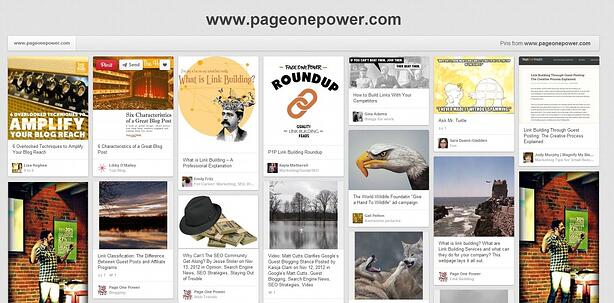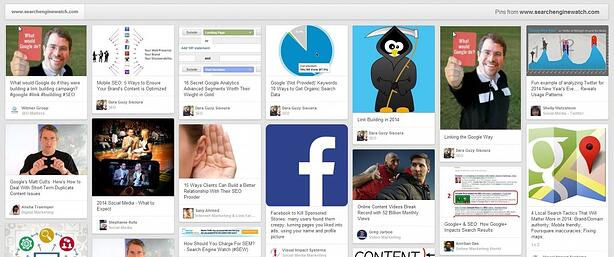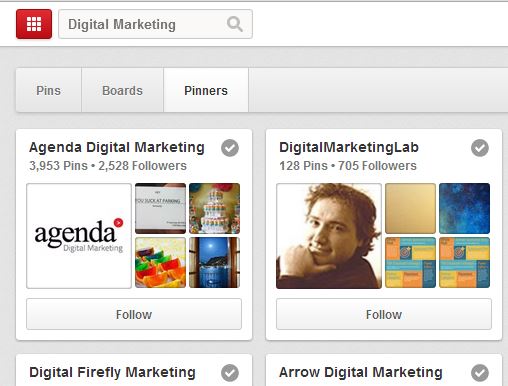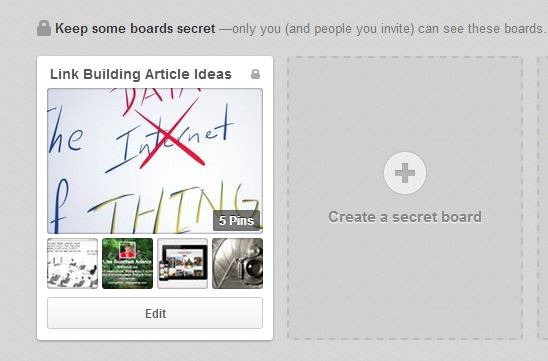From a distance, re-pinning pins on Pinterest looks like link building.
Each pin is a visual anchor text that leads you to a piece of content on another site-- a link, if you will. If enough eyes have skimmed your content and deemed it useful, it gets shared across what is quickly becoming one of the most engaged social media audiences on the web. Links abound!
If you only had a superficial knowledge of SEO, Pinterest would seem like the best link building tool in the history of the Internet.
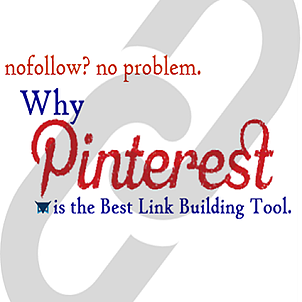
Except this “link building” is not the juicy kind of link building that elevates your site’s standing in the SERPs. Pinterest outfits each and every “pin” with a rel=”no follow” tag. This tells web crawlers not to index that particular link, which robs your site of any “link juice” that could be associated with that pin or any subsequent re-pins. By “link juice,” I mean the value that is passed from one page to another via links that contributes to your page’s ranking in the SERPs.
Link juice or no, Pinterest can still be a helpful link building tool when it comes to conducting research, building relationships, amplifying your content, and organizing sources of inspiration.
Not only does Pinterest allow you to see which users are pinning content from your site, but also which users are pinning content from your competitors’ sites. This makes it a powerful tool for determining viable target audiences. You can also see what else these users are pinning on the same board as your content, which can provide insight into what your site is relevant to according to real internet users. Additionally, these users may have websites or blogs on which you could build links.
Having a Pinterest presence will help you build relationships with these users-- relationships that could potentially add more value to your site than a single shot of link juice.
Research
When it comes to link building research, few tools are better than Pinterest for discovering new markets waiting to consume your content. The ability to find users who are already loyal, or are at very least interested, in your brand will show you who your target audience should be and could even lead you to websites that would be happy to provide a link to your site because you don’t need to convince them that you’re rad.
The “source” tool is my favorite. Anyone who has a Pinterest account can enter:
By substituting “YOURURL” with the URL of your choice, it will show you all of the pins to content that originate from that particular site.
By entering in the URL of the site you’re building links for, you can see:
- Who is already interested in your site and which of these interested parties have their own blogs or websites
- What these users see your website as being relevant to
From this, Pinterest can give you a few “easy win” links on the websites of those who are already interested in you, and can show you audience-related link building keywords you can use to find sites relevant to your niche.
For example, if I enter:
I see:
While some of these pins come from the Page One Power Pinterest, a few of the top results are from other boards. These boards include the following topics:
- Marketing
- SEO
- Social
- Blogging
- Fun
- “Awesome Pictures”
This tells me that if I were to be building links for Page One Power’s site, websites on marketing, SEO, social media marketing, and blogging would be relevant target sites. It also reveals that our content is perceived as “fun” and “awesome.”
This is helpful to do with both your competitors’ sites and influential sites in your field as well. For instance, if I want to see who has pinned content from Search Engine Watch, a leading SEO-related web publication:
You see not only more related terms, such as “digital marketing,” but also many more users that could be interested in your site.
What do you do now that you have this information? If this reveals any relevant niches that you may not have considered before, consider them. Look through who has been pinning this content. Do they have blogs or websites? Follow their boards. Form a social media relationship with them.
Relationships
When it comes to building relationships with influencers in your niche-- and related niches-- Pinterest is a great tool for both finding and establishing connections with the right people.The “right people” in this case refers to those who are pinning your content and Pinterest influencers who should be pinning your content and featuring it on their website.
You can start with your “source” results. Do any of those users have a website or blog? If so, it will likely be listed in their “profile” information:
If any of the sites turn out to be quality sites that you would want to build a link on, follow their boards. Interact with them before sending an email outreach. I recommend commenting on pins in addition to re-pinning. Re-pinning is so easy that a bot could do it. Commenting gives you an opportunity to thoughtfully respond to the targeted user’s interests.
Additionally, once the targeted user associates your awesome content with your Pinterest account, they may feel compelled to re-pin guest posts, fresh mentions, or content from your site, which will help with the amplification process and drive additional traffic to your site. This will be especially effective if your target users are influencers in your field.
While there are many paid services that can help you identify and connect with relevant influencers, a simple search for the keywords you identified while researching will do. Just be sure to click on the “Pinners” tab of the search results.
This will show you a range of Pinners with “Digital Marketing” in their name, along with how many pins they’ve posted and how many followers they have. The check mark means that their website has been verified by Pinterest. You obviously want to investigate pinners with lots of followers and pins-- these are the users that carry the most clout, especially if they interact with their large followings.
You can also search for boards with “digital marketing” in the title, but the results will show you the number of pins, not the number of followers. A user could have thousands of pins but no followers, which could be great if you’re looking to form a friendship, but not so great if you hope to use this friendship to amplify your content.
Amplification
Any good internet marketing strategy accounts for amplification-- how you will draw attention (and continue to draw attention!) to your work once you’ve published it. You need not limit your perception of what content needs amplification to linkable assets on your site. Links that you’ve built should also be shared in order to drive traffic to the sites where you’ve built links (and that user might click on your link in the content and ta da! Even more traffic!)
As a result of building relationships on Pinterest, you now have an audience that could potentially re-pin the content that you share. This is more likely if you’re a good social media citizen. This means that you repin content that is relevant to your industry. This means that you follow the 80/20 rule: 80% of your pins should engage your followers. 20% can be branded content.
But really, as long as there’s a visual component, you can pin anything. If you build a resource link on a page with a compelling image as a header, you can pin that. If you write a guest post, you should definitely include a pinnable image and pin it later. Use your pin descriptions wisely. Like good long-tail anchor text, they should let the user know what they will find on the other side of the pin.
Subsequently, you should be strategic when creating your Pinterest boards. Pinning related content to the same board is an opportunity to reaffirm what that content is relevant to. Who knows, maybe another link builder will find your board while conducting research?
Inspiration (and Organization)
Pinterest may be great for building relationships with folks who will want to build links for you, but it was created to be “a tool for collecting and organizing the things that inspire you.” If we pretend that my Twitter feed is an acceptable sample size for the moment, it seems that internet marketers of all stripes are constantly seeking new sources of inspiration. All the good topics seem to have been taken. Every niche has a moment of feeling finite, until you pin two articles next to each other then blam! Inspiration for something new.
The Pin-It button makes it easy to pin anything that draws your attention to what could easily be a secret board. Secret boards are for your eyes only, so notes on your pins can range from “The argument here is awful, pick up this topic from another perspective” to “how can I talk about this?”
These boards don’t have to be limited to your niche, either. Because I write about link building, my article inspiration board also tends to include wisdom about writing or the future of the internet. The purpose of these boards is to open your mind to new topics, not to revisit the same array of topics that have been covered again and again.
We need not forget that link building is a creative endeavor. Using Pinterest as a means of organizing your inspiration sources will help you become a more innovative link builder.
So no, Pinterest won’t be your SEO miracle worker. But it can be a helpful tool for link prospecting, building relationships, amplifying your content, and organizing inspiration for future content.

